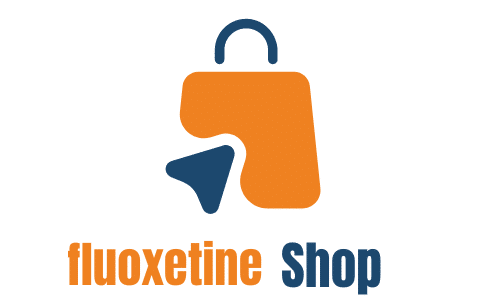How to Navigate the Integration of Blockchain for Transparent and Secure Business Transactions?

In the past decade, blockchain technology has emerged as a groundbreaking development, transforming how businesses operate. This decentralized, distributed ledger system ensures transparency, security, and efficiency, providing an optimal solution for business transactions. In this guide, we will walk you through the integration of blockchain to revolutionize your business operations.
Understanding the Power of Blockchain
Before delving into the integration process, it’s crucial to understand what blockchain is and how it can enhance your business transactions. Blockchain is a type of distributed ledger technology where data is stored across multiple systems in a network. This decentralized storage method makes it nearly impossible for hackers to alter or steal data, providing unprecedented security levels.
Have you seen this : What Are the Steps to Crafting a Zero-Waste Policy for Sustainable Business Operations?
Blockchain boasts of an impressive array of capabilities. Its transparency features, for instance, ensure all parties involved in a transaction can view the transaction history, fostering trust and cooperation. Moreover, the technology eliminates the need for intermediaries, enabling fast and cost-effective transactions.
Evaluating Your Business Needs
The process of integrating blockchain into business transactions begins with evaluating your business needs. This means identifying the challenges that your business faces in terms of transaction security, transparency, speed, and cost.
Also to read : Expert in transport and logistics in Calais: your reliable partner
Once you’ve identified these challenges, consider how blockchain could address them. For instance, if your business suffers from a lack of transparency in its transactions, blockchain’s ability to provide a transparent, immutable record of all transactions could be the solution you need.
Remember, blockchain might not be the best solution for all businesses. Evaluating business needs will help you decide if blockchain is right for you.
Choosing the Right Blockchain Platform
Choosing the right blockchain platform is another critical step in the integration process. Different platforms offer various features, and the choice should align with your business needs.
Some popular blockchain platforms include Ethereum, Hyperledger Fabric, and Ripple. Ethereum is suitable for businesses that want to develop and run smart contracts. Hyperledger Fabric caters to businesses looking for modularity and scalability in their blockchain solutions. Meanwhile, Ripple is ideal for businesses that deal with cross-border transactions.
Never rush the decision-making process. Take your time to investigate each platform’s features, advantages, and limitations. Consider seeking expert advice or consulting with a blockchain development company to make an informed choice.
Implementing Blockchain in Your Business Processes
Once you’ve chosen a suitable blockchain platform, the next step involves implementing the technology in your business processes. This could involve developing blockchain-based applications, integrating blockchain with existing systems, or even creating a new business model based around blockchain.
Implementation should always be done in stages. Start with a pilot project to test the effectiveness of blockchain. Monitor the results closely and use them to fine-tune your strategy. Gradually expand the implementation as you gain confidence and understanding of the technology.
Remember, the implementation stage can be complex and will likely require assistance from blockchain experts or a specialized development team.
Educating Your Team
Last but certainly not least, your team needs to understand blockchain and its implications for your business. Provide training sessions, workshops, and resources to help your employees understand the technology and how it affects their roles.
Your team should also be informed about the changes in business processes and systems that will come with blockchain integration. Clear communication is essential to ensure everyone is on board and prepared for the transition.
In summary, the integration of blockchain into business transactions is not a process to be taken lightly. It requires careful planning, the right platform selection, gradual implementation, and team education. However, with due diligence and a strategic approach, blockchain can revolutionize your business transactions, providing unprecedented security and transparency.
The Role of Regulatory Compliance in Blockchain Integration
When integrating blockchain into business operations, understanding the role of regulatory compliance is vital. The regulatory landscape for blockchain is still evolving and varies from one region to another. Businesses need to be aware of the legal implications and adhere to the proper regulatory guidelines to avoid potential legal issues.
In some cases, blockchain’s immutable nature could raise privacy concerns, especially in regions with strict data privacy laws, like the European Union’s GDPR. Therefore, it’s important to engage legal experts or consultants who are well-versed in the regulations of the regions where your business operates.
For instance, if you’re considering a public blockchain platform, you’ll need to think about how public access to transaction data might affect compliance with privacy laws. On the other hand, private or permissioned blockchains can provide control over who has access to the data, which can help address privacy concerns.
Moreover, certain industries have specific legal requirements that you’ll need to consider. For example, in the financial industry, Know Your Customer (KYC) and Anti-Money Laundering (AML) regulations require businesses to verify the identities of their customers and monitor transactions for suspicious activity. With blockchain’s transparency and traceability features, complying with these regulations can be more efficient and effective.
In summary, including regulatory compliance in your blockchain integration strategy is crucial to navigate the legal landscape. Working with experts who understand the regulations in your specific context can help ensure that your blockchain solution is legally sound and compliant.
Evaluating the Impact of Blockchain Integration
After successfully integrating blockchain into your business transactions, it’s essential to continually evaluate its impact. This involves regularly monitoring and assessing the performance of the blockchain solution to ensure it’s delivering the desired results. It’s also a way to identify potential areas for improvement or modification.
Key performance indicators (KPIs) can help monitor the effectiveness of the blockchain solution. These might include transaction speed, cost saving, or the level of transparency achieved. If the blockchain solution is not meeting these KPIs, adjustments may be required.
In addition, consider seeking feedback from users and stakeholders. Their insights can offer valuable perspectives on how the blockchain system is performing and its impact on business operations. They can provide information on any challenges encountered, which can guide improvements.
Remember that the blockchain technology landscape is constantly evolving, and new developments could offer more efficient or secure solutions. Staying updated with the latest trends and advancements can help ensure that your business remains at the forefront of blockchain integration.
In conclusion, integrating blockchain technology into business transactions can significantly enhance transparency and security. However, this process requires careful planning, choosing the right platform, implementing the technology gradually, educating the team, adhering to regulatory compliance, and regularly evaluating the impact. With a strategic approach and ongoing effort, businesses can harness blockchain’s power to revolutionize their operations.
